
agor
Think Figma, but for AI coding assistants.
Next-gen agent orchestration for AI coding. The multiplayer-ready, spatial layer that connects Claude Code, Codex, Gemini, and any agentic coding tool into one unified workspace.
TL;DR: Agor is a multiplayer spatial canvas where you coordinate multiple AI coding assistants on parallel tasks, with GitHub-linked worktrees, automated workflow zones, and isolated test environments—all running simultaneously.
Visualize, coordinate, and automate your AI workflows across tools solo or with your team. Agor offers a place where you can coordinate entire swarms of AI agents.
In Action
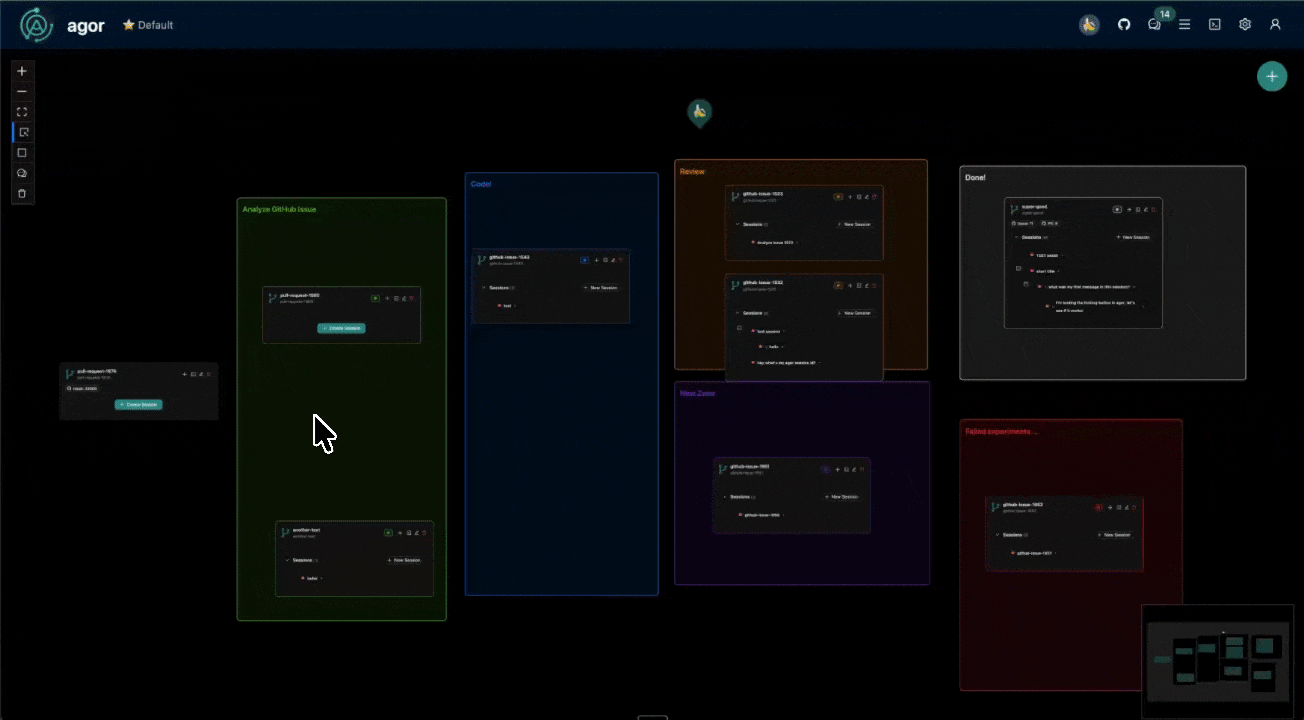
Spatial canvas with worktrees and zones
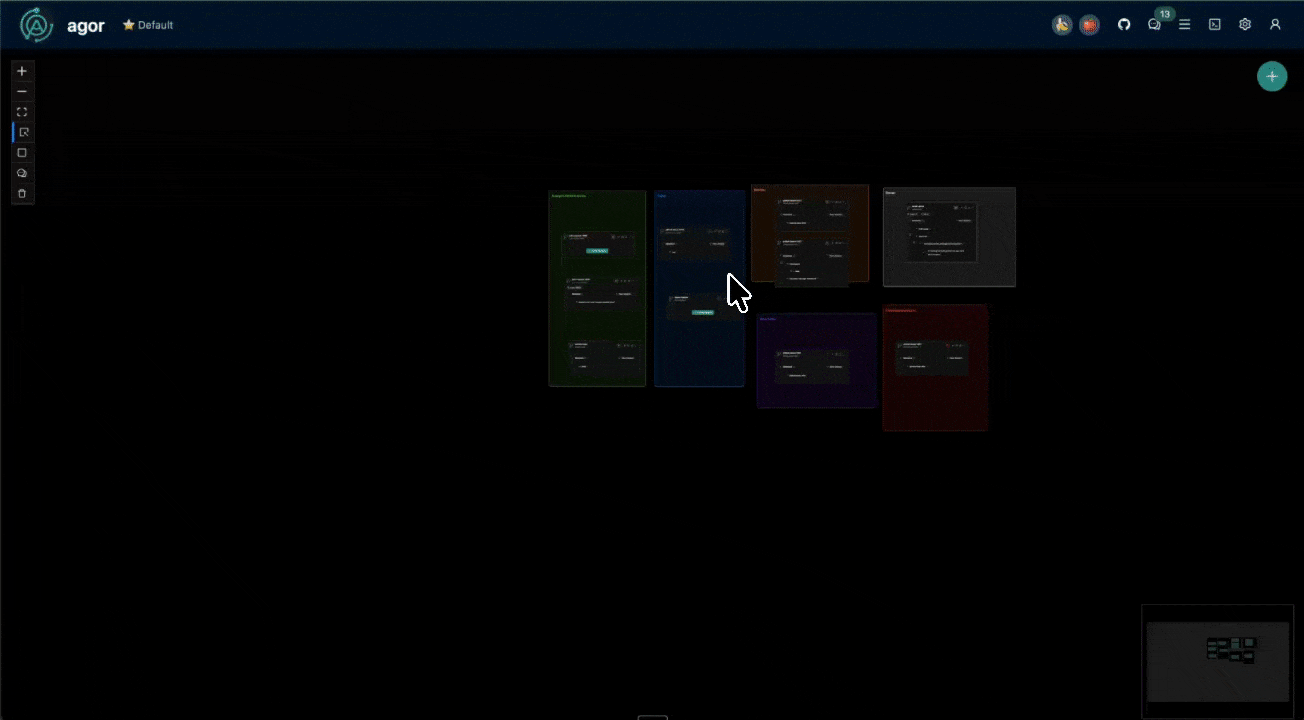
Rich web UI for AI conversations
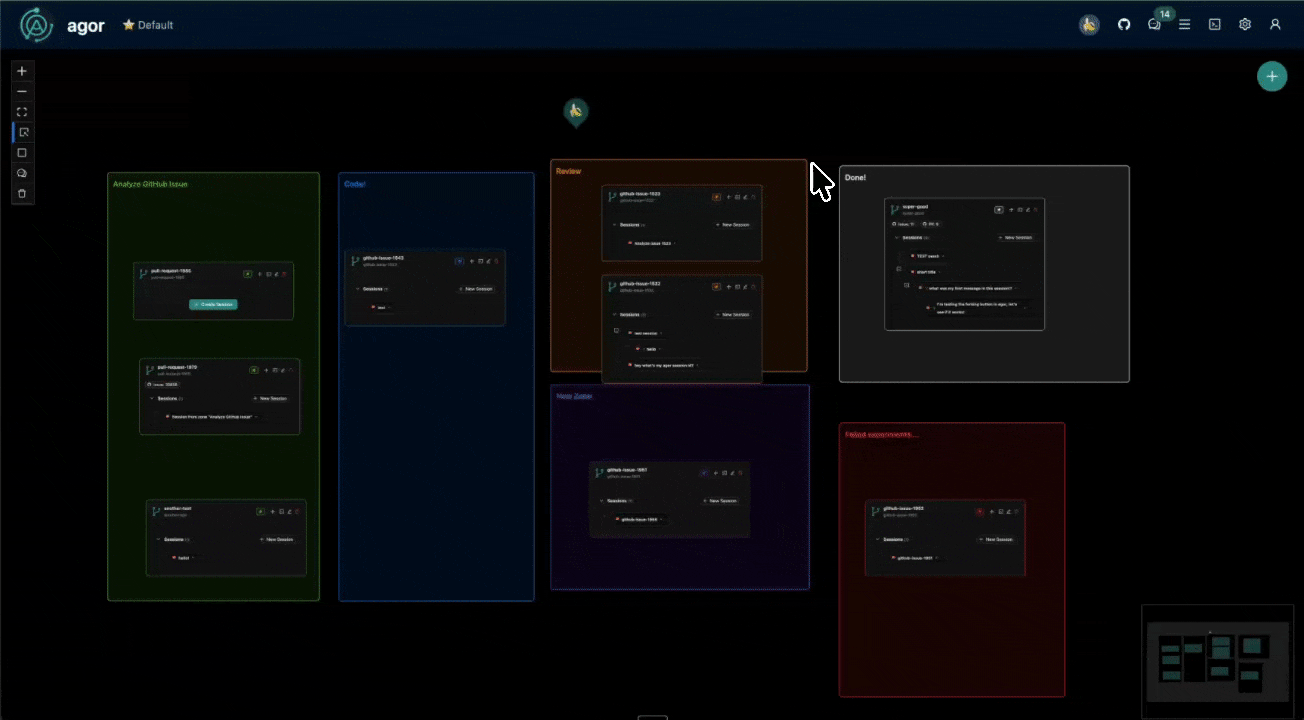
MCP servers and worktree management
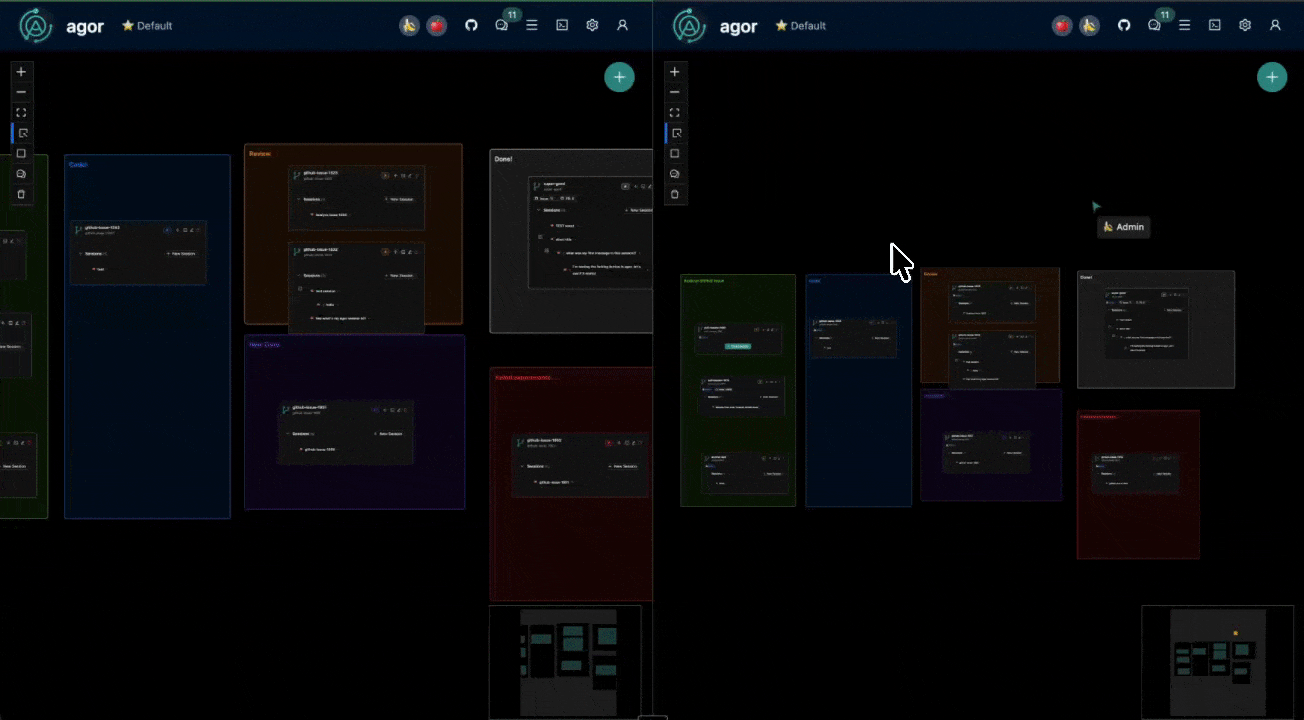
Live collaboration with cursors and comments
▶️ Watch 13-minute walkthrough on YouTube — Unscripted demo showing Agor’s core features
Getting Started
npm install -g agor-live
agor init
agor daemon start
agor openTry in GitHub Codespaces (up in 1-2 minutes):
See the Getting Started Guide for detailed instructions, or the Development Guide for Docker setup.
Key Features
🧩 Agent Swarm Control
- Run as many Claude Code, Codex, and Gemini sessions as you can handle—simultaneously.
- Agents in Agor can coordinate and supervise through the internal Agor MCP service.
- Built-in scheduler triggers templated prompts on your cadence.
🌐 Multiplayer Spatial Canvas
- Figma-esque board layout organizes your AI coding sessions across boards (full 2D canvases).
- Scoped/spatial comments + reactions pinned to boards, zones, or worktrees (Figma-style).
- WebSocket-powered cursor broadcasting and facepiles show teammates in real time.
🌲 Session Trees — Fork, Spawn, Coordinate
- Fork sessions to explore alternatives without losing the original path.
- Spawn subsessions for focused subtasks that report back to the parent.
- Visualize the session genealogy in “session trees”
⚙️ Zone Triggers — Workflows Made Spatial
- Define zones on your board that trigger templated prompts when worktrees are dropped.
- Build kanban-style flows or custom pipelines: analyze → develop → review → deploy.
- GitHub-native workflow: Link worktrees to issues/PRs, auto-inject context into prompts
- Template syntax:
"deeply analyze this github issue: {{ worktree.issue_url }}" - Each worktree = isolated branch for a specific issue/PR
- AI agents automatically read the linked issue/PR context
- Template syntax:
🌳 Isolated Development Environments
The Problem: Working on 3 PRs simultaneously? Each needs different ports, dependencies, database states.
Agor’s Solution:
- Each worktree gets its own isolated environment with auto-managed unique ports
- Configure start/stop commands once with templates:
PORT={{ add 9000 worktree.unique_id }} docker compose up -d - Everyone on your team can one-click start/stop any worktree’s environment
- Multiple AI agents work in parallel without stepping on each other
- Health monitoring tracks if services are running properly
No more: “Kill your local server, I need to test my branch”
🕹️ Real-Time Strategy for AI Teams
- Coordinate agentic work like a multiplayer RTS.
- Watch teammates or agents move across tasks live.
- Cluster sessions, delegate, pivot, and iterate together.
📱 Mobile-Friendly Prompting
- Keep sessions cooking on the go — mobile-optimized UI for sending prompts and monitoring progress.
- Access conversations, send follow-ups, and check agent status from your phone.
- Full conversation view with hamburger navigation to switch between sessions.
Use Case: Parallel PR Workflow
Your team has 3 bug fixes and 2 features in flight. With Agor:
- Create 5 worktrees, each linked to its GitHub issue/PR
- Spawn AI sessions for each worktree (Claude, Codex, Gemini)
- Drop into zones → “Analyze” zone triggers:
"Review this issue: {{ worktree.issue_url }}" - Watch in real-time as all 5 agents work simultaneously on the spatial canvas
- Isolated environments with unique ports prevent conflicts
- Push directly from worktrees to GitHub when ready
No context switching. No port collisions. No waiting.
Screenshots
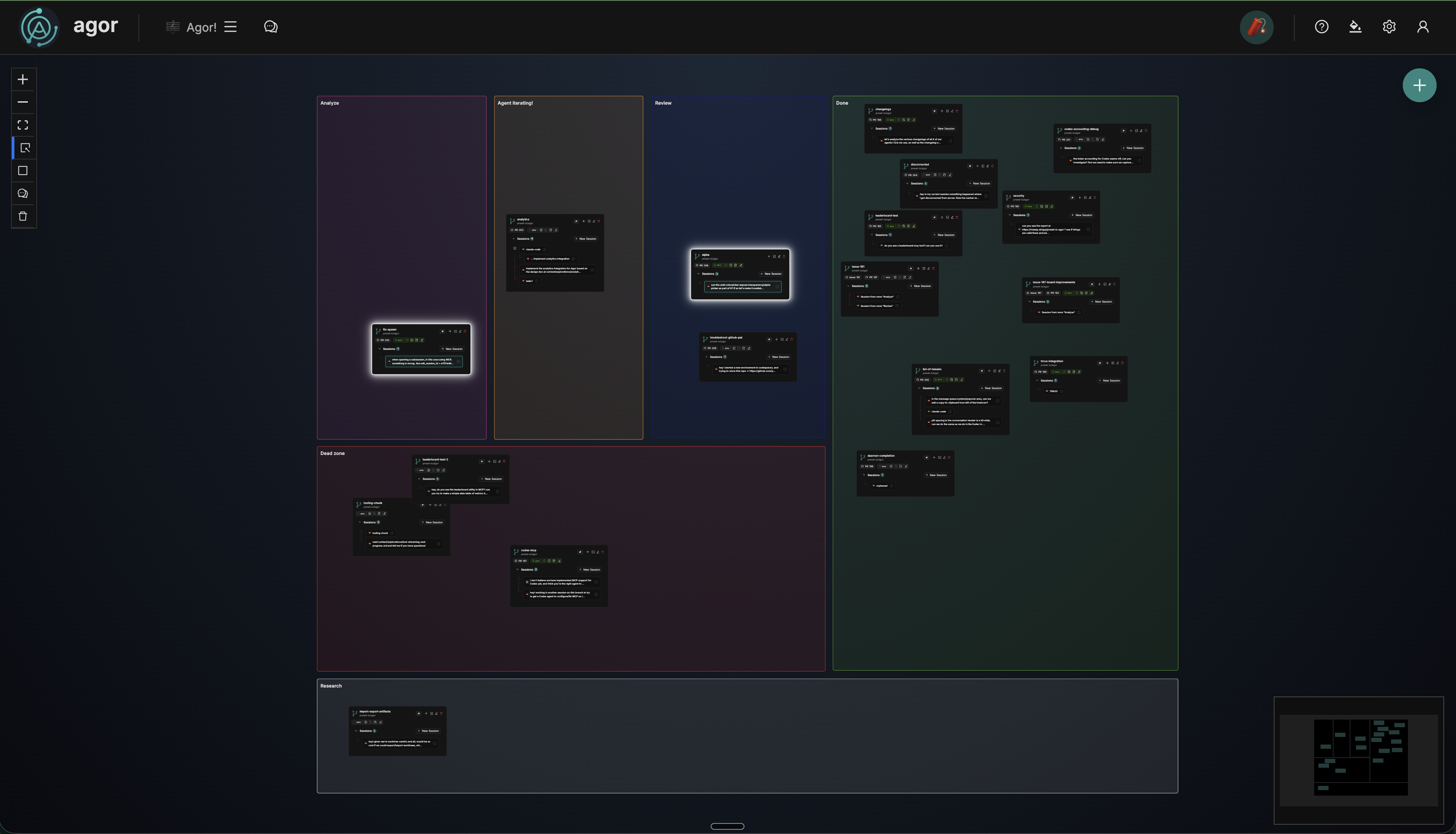
Multiplayer spatial canvas with zones, real-time cursors, and session organization
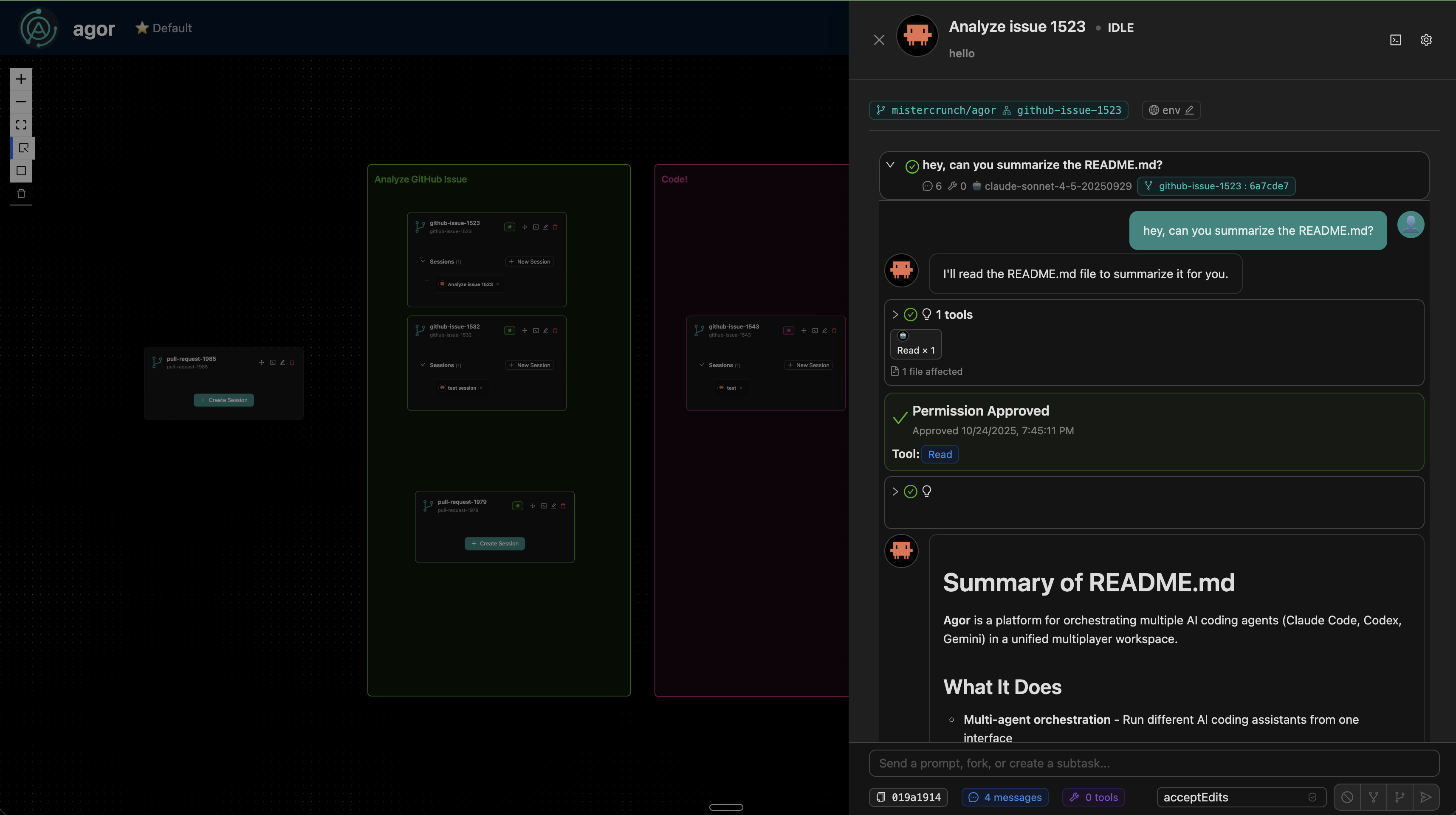
Task-centric conversation UI
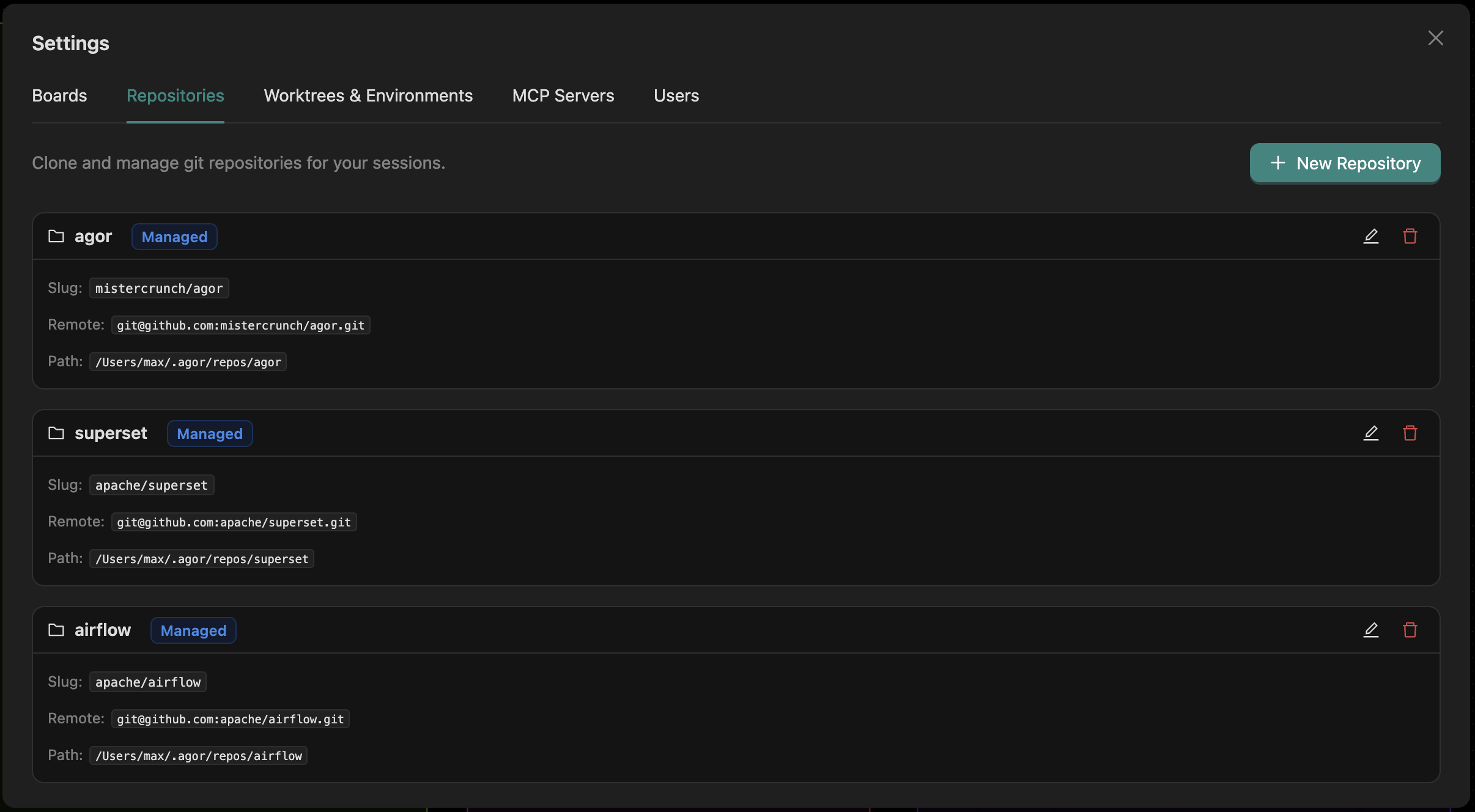
MCP server and worktree management
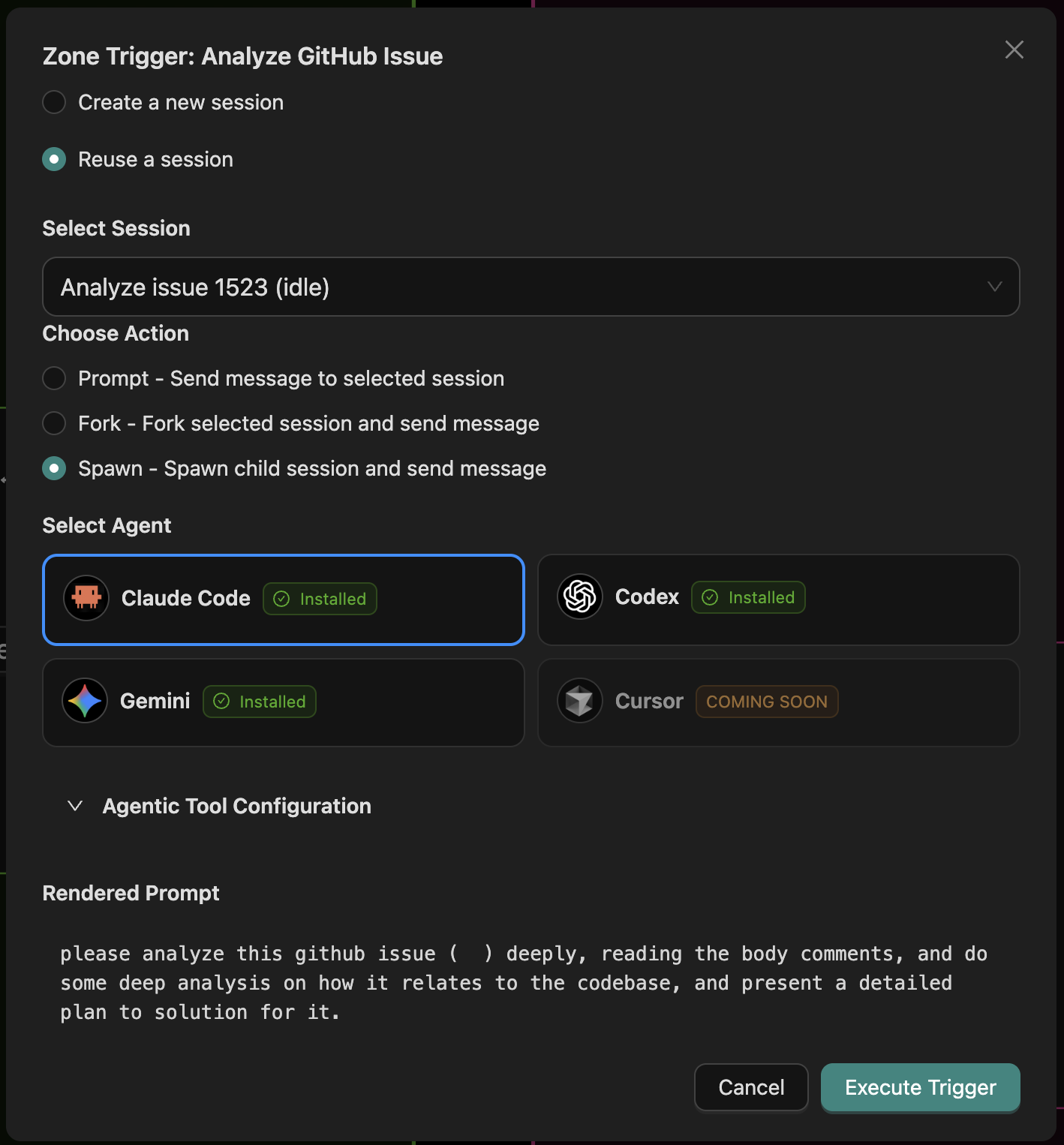
Zone trigger on session drop
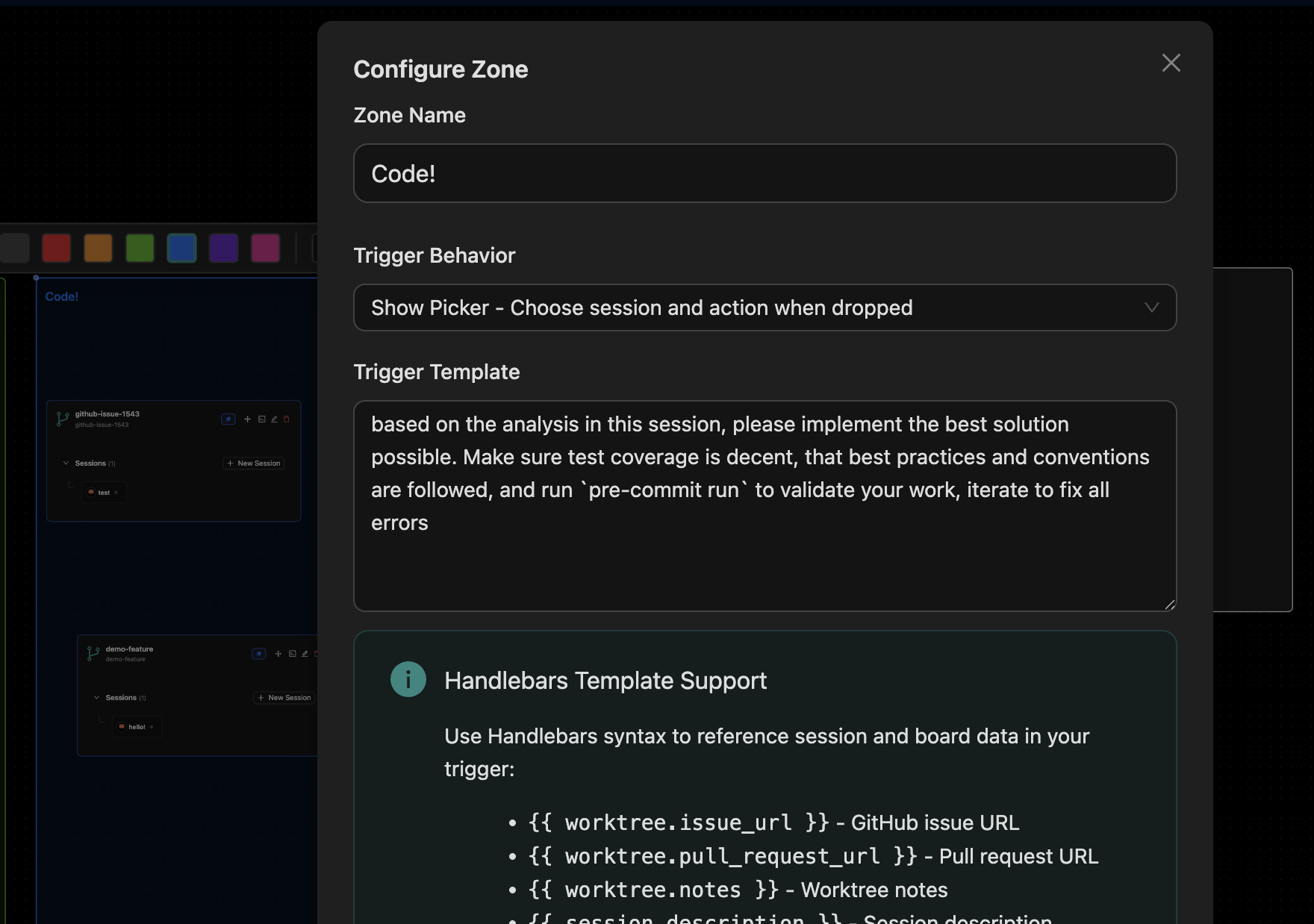
Zone trigger configuration
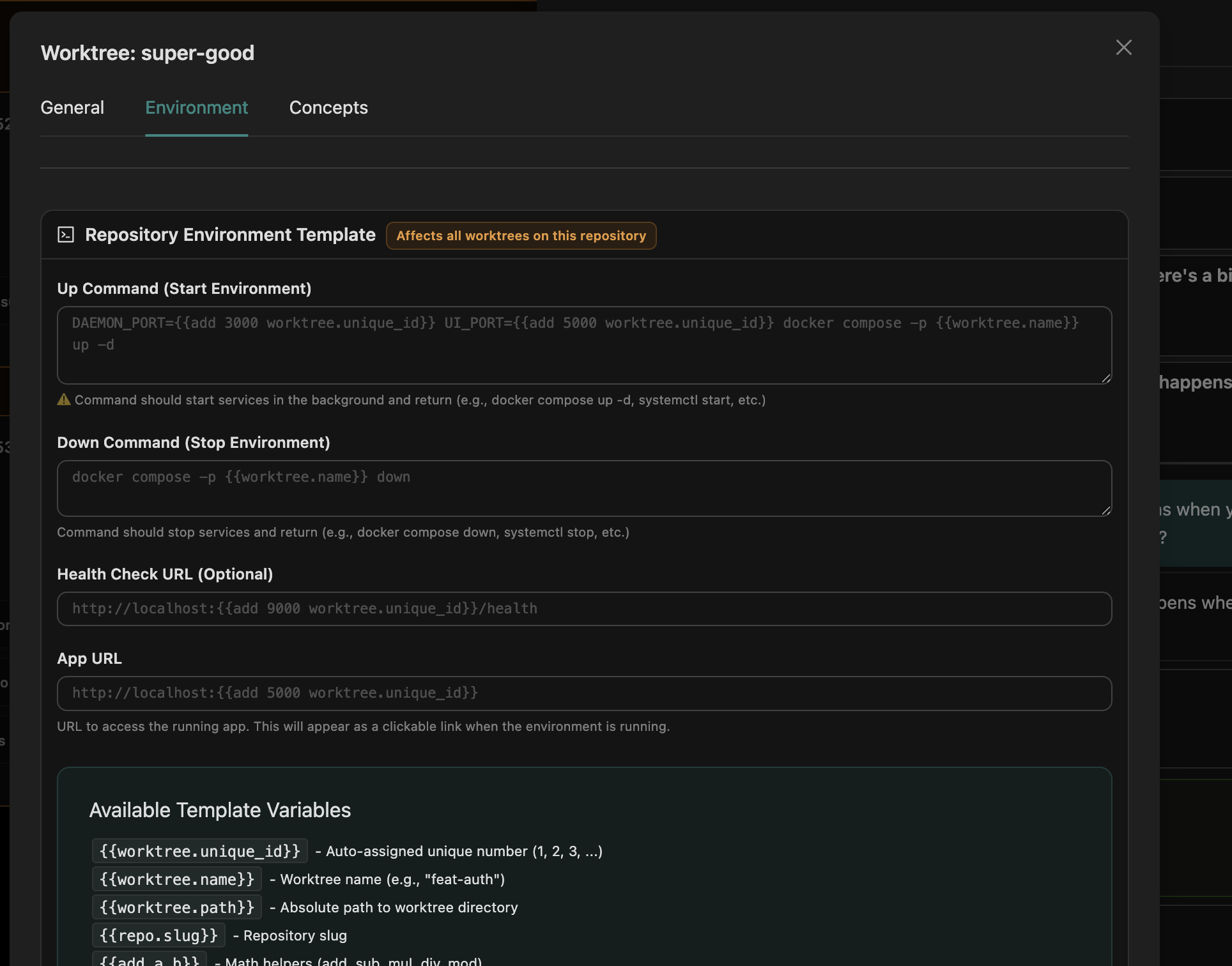
Worktree environment setup
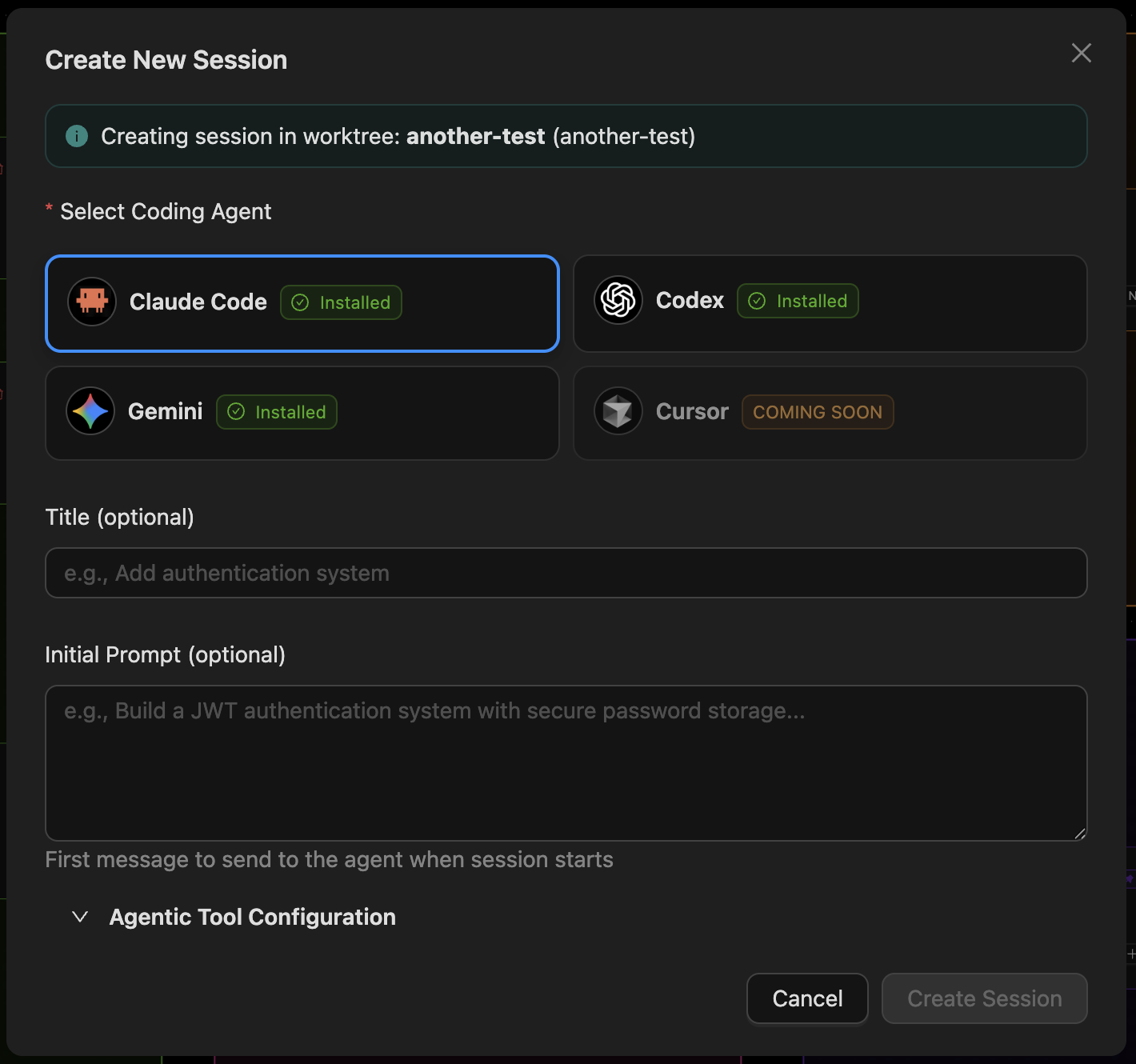
Session creation with agent selection
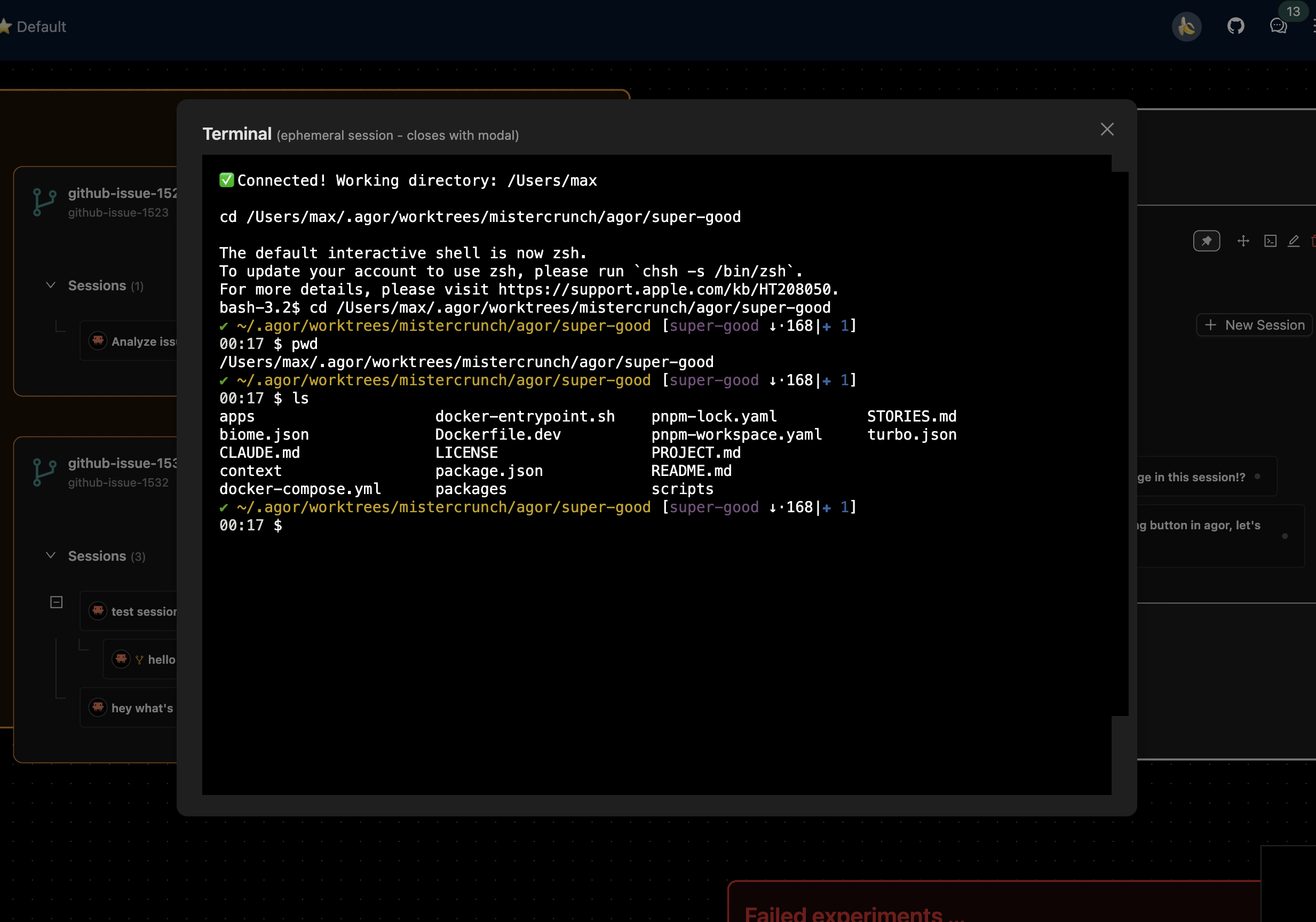
Built-in terminal with worktree context
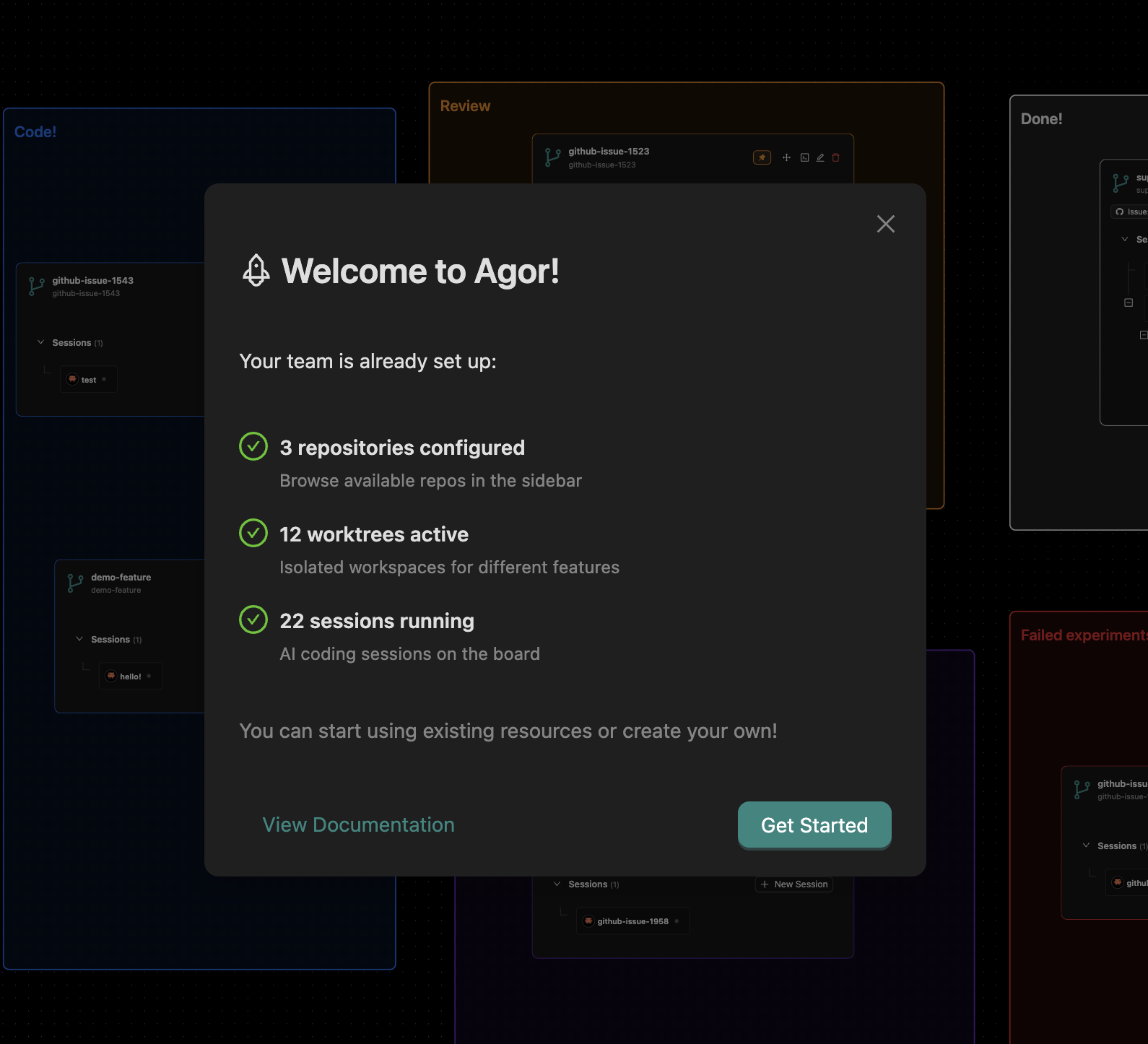
Welcome screen showing team status
Stack
Backend: FeathersJS, Drizzle ORM, LibSQL Frontend: React 18, TypeScript, Ant Design, React Flow CLI: oclif Realtime: WebSocket via Socket.io
See the Architecture Guide for details.
Roadmap
Highlights:
- Match CLI-Native Features — SDKs are evolving rapidly and exposing more functionality. Our goal is to push integrations deeper to match all key features available in the underlying CLIs, closing the gap between SDK-based orchestration and native tool capabilities
- Bring Your Own IDE — Connect VSCode, Cursor, or any IDE directly to Agor-managed worktrees via SSH/Remote. Keep your familiar editor and agent while Agor orchestrates sessions, tracks progress, and enables team visibility on the multiplayer board
- Unix User Integration — Enable true multi-tenancy with per-user Unix isolation for secure collaboration. Read the exploration →
Contributing
TypeScript strict mode, branded types, repository pattern with Drizzle ORM.
Read the Development Guide for dev workflow and detailed roadmap.
License
Business Source License 1.1 — see the GitHub repository for details
“git tracks code, Agor tracks the conversations that produced it.”